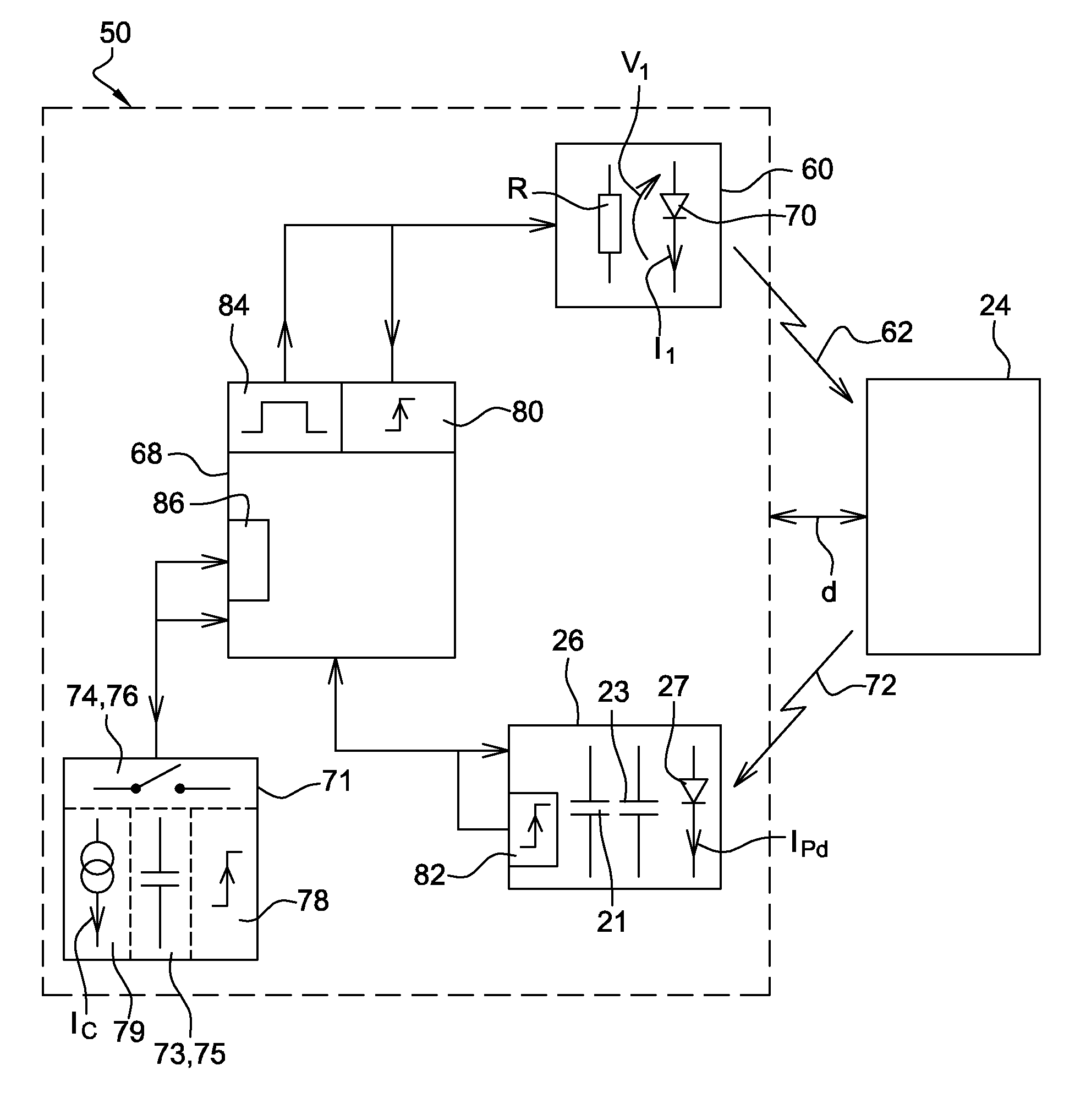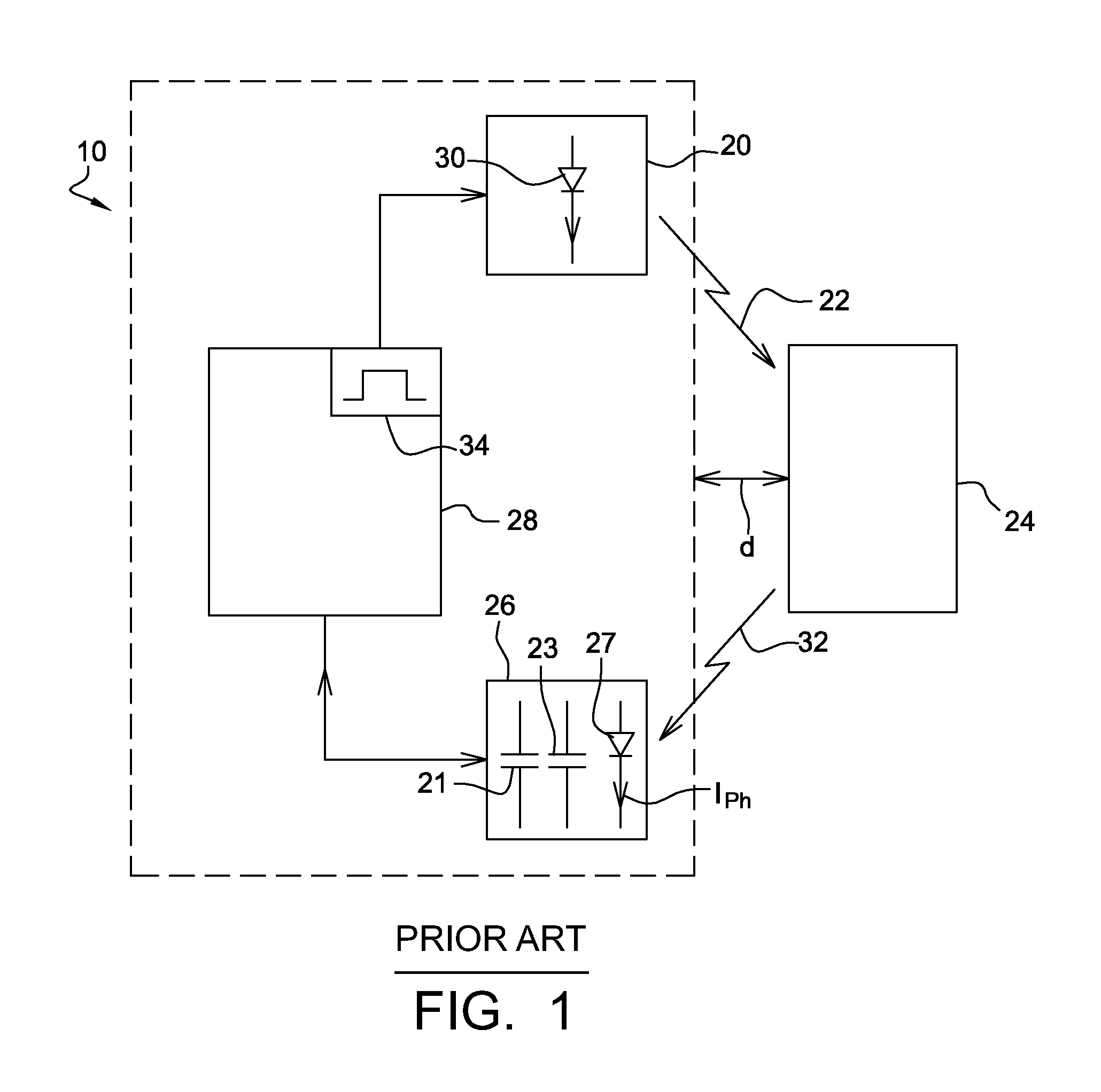Distance-measuring-device
a technology of distance measurement and distance, applied in distance measurement, instruments, surveying and navigation, etc., can solve the problem that digital parameters do not accurately represent what is actually emitted in the air, and achieve the effect of accurately determining the distance of an obj
- Summary
- Abstract
- Description
- Claims
- Application Information
AI Technical Summary
Benefits of technology
Problems solved by technology
Method used
Image
Examples
example method 1
[0051]FIG. 5 shows an example of timing charts of signals processed by the distance-measuring-device 50 according to one implementation of the methodology.
[0052]A first timing chart B1 shows the characteristics of the emitted light-pulse 62 and specifically shows the current I1 flowing through the optical diode 70 during the emission of the emitted light-pulse 62. The form of the current I1 includes a smooth rising edge RE and a smooth falling edge FE. The smooth rising edge RE corresponds to the transient during activation of the gate driver of the light-emitting component 60, excited by the sharp rising edge of the digital pulse generated by the signal generator 84. The smooth falling edge FE corresponds to the transient during deactivation of the gate driver of the light-emitting component 60 excited by the sharp falling edge of the digital pulse generated by the signal generator 84.
[0053]A reference time T0 is shown when the level of the current I1 of the optical diode 70 exceed...
example method 2
[0068]A fifth timing chart B5 shows an alternative method. The ‘Y’ axis is a representation of the activation of the time slots (TS1, TS2). The method integrates the current Ipd starting at the time TA that depends on the point the second adjustable threshold voltage THL2 is achieved and ends at the time TB. The photosensitive element 27 starts to generate the current Ipd at the time TA and ends to generate the current Ipd at the time TB, i.e. the reflected light-pulse 72 starts to influence the photosensitive element 27 at the time TA and stops at the time TB. The current Ipd is integrated during the first and the second time slots TS1, TS2 that results respectively to a third and a fourth amount of electrical charges Q3, Q4.
[0069]The distance d to the object 24 can be calculated by using Eq. 7 where c stands for the velocity of light in the medium through which it propagates:
d=½*c*ΔT1*(Q3 / (Q3+Q4)). Eq. 7.
[0070]In order to implement this with the apparatus of FIG. 3, the first cap...
PUM
 Login to View More
Login to View More Abstract
Description
Claims
Application Information
 Login to View More
Login to View More - R&D
- Intellectual Property
- Life Sciences
- Materials
- Tech Scout
- Unparalleled Data Quality
- Higher Quality Content
- 60% Fewer Hallucinations
Browse by: Latest US Patents, China's latest patents, Technical Efficacy Thesaurus, Application Domain, Technology Topic, Popular Technical Reports.
© 2025 PatSnap. All rights reserved.Legal|Privacy policy|Modern Slavery Act Transparency Statement|Sitemap|About US| Contact US: help@patsnap.com



